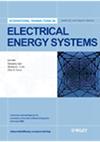Coordination of multilateral trades in electricity markets via power vectors
引用次数: 0
Abstract
A transmission restructure model is presented, which resolves line abuse, conflict of incentives and information asymmetry in electricity markets. It uses market compatible game theory, graph theory, market mechanism, multilateral trade structure, etc. rather than conventional tools. The model is useful to emulate any active, competitive transmission sector. It has more relevance in countries like India with high T&D loss and power deficit problems. Cooperative game theory (CGT) is holistically applied in organizational, operational, commercial and planning aspects of restructure. A three phase CGT environment to model entity interactions, an elastic transmission service charge (TSC) to penalize abuse and a powerful power vector to resolve information asymmetry are some proposals developed in this context. In the scheme, Discos use power vectors to play the game and negotiate for agreeable TSC share and engineer fruitful mergers. A stable set of coalitions contracting optimal trades at lowest TSC is finally obtained. The method is illustrated on a 5 bus and successfully tested on a 24 bus Indian power system. The outcome is that agents aggregate sequentially, to safeguard network security as a common agenda, despite market activities starting at diverse locations. These results are important because transmission is the most difficult zone to model in electricity markets due to several issues and this model addresses most of them. Copyright © 2011 John Wiley & Sons, Ltd.通过电力矢量协调电力市场的多边贸易
提出了解决电力市场中线路滥用、激励冲突和信息不对称问题的输电结构重构模型。它使用了市场兼容博弈论、图论、市场机制、多边贸易结构等,而不是传统的工具。该模型可用于模拟任何活跃的、竞争性的输电部门。它更适用于像印度这样有高输配电损耗和电力短缺问题的国家。合作博弈论(CGT)全面应用于重组的组织、运营、商业和计划方面。在此背景下,提出了一种用于实体交互建模的三相CGT环境,一种用于惩罚滥用的弹性传输服务收费(TSC)和一种用于解决信息不对称的强大功率向量。在该方案中,Discos利用权力向量进行博弈,协商获得令人满意的TSC份额,并设计富有成效的合并。最后得到了一组在最低TSC下契约最优交易的稳定联盟。该方法在5母线上进行了实例验证,并在24母线印度电力系统上进行了成功的试验。其结果是,尽管市场活动开始于不同的地点,但代理按顺序聚集起来,将维护网络安全作为一个共同议程。这些结果很重要,因为输电是电力市场中最难建模的区域,因为有几个问题,而这个模型解决了其中的大多数问题。版权所有©2011 John Wiley & Sons, Ltd
本文章由计算机程序翻译,如有差异,请以英文原文为准。
求助全文
约1分钟内获得全文
求助全文

 求助内容:
求助内容: 应助结果提醒方式:
应助结果提醒方式:


